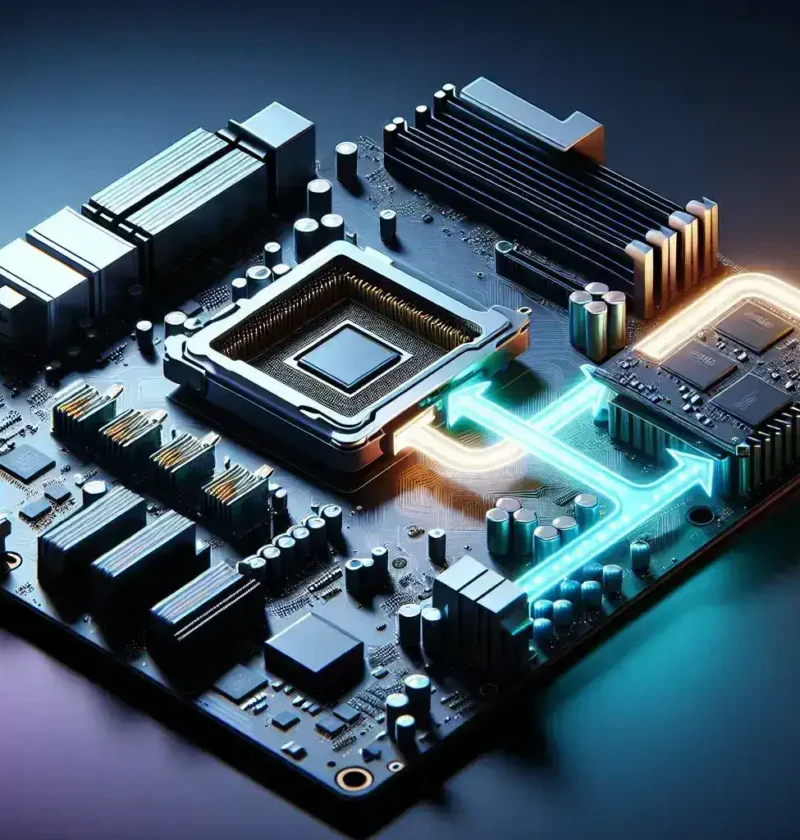Understanding GPUs
Graphics Processing Units (GPUs) are crucial components in modern computing, enabling us to render graphics, run complex simulations, and enjoy immersive gaming experiences. There are primarily two types of GPUs: onboard (integrated) and dedicated (discrete). Understanding these two types is vital for anyone looking to optimize their system’s performance.
What are Onboard and Dedicated GPUs?
An onboard GPU is integrated within the CPU, which generally makes it less powerful than a dedicated GPU. This type of graphics card is sufficient for everyday tasks such as browsing the internet, working on documents, and streaming videos. However, for resource-intensive applications like gaming or 3D rendering, an onboard GPU may struggle to deliver acceptable performance.
A dedicated GPU, on the other hand, is a stand-alone graphics card that possesses its own memory and processing power. Dedicated GPUs are designed for high-performance tasks, allowing users to play modern games at high settings or work with video editing and graphic design software efficiently.
Why Switch Between GPUs?
Switching between onboard and dedicated GPUs can help you balance performance and battery life. For instance, when you are performing simple tasks, you might prefer using the onboard GPU to conserve energy. In contrast, dedicated GPUs can be activated when running demanding applications that require enhanced performance. This flexibility can lead to better battery efficiency and system responsiveness.
Steps to Switch Between Onboard and Dedicated GPUs
Switching between onboard and dedicated GPUs varies depending on your operating system and hardware configurations. Below is a step-by-step guide for both Windows and macOS systems.
For Windows Users
Step 1: Access Graphics Settings
Right-click on your desktop and select NVIDIA Control Panel or AMD Radeon Settings, depending on your dedicated GPU. If you can’t find these options, ensure that your dedicated GPU drivers are installed properly.
Step 2: Manage 3D Settings
Within the control panel, navigate to the Manage 3D settings tab. Here you will find options to customize how the GPU handles your applications.
Step 3: Select Your Preferred GPU
- Under the Global Settings tab, you can choose the preferred graphics processor from the drop-down menu. Select High-performance NVIDIA processor or High-performance AMD processor for dedicated use.
- Alternatively, you can configure specific applications to use either the onboard or dedicated GPU by switching to the Program Settings tab and selecting the desired application.
Step 4: Save and Exit
Once you have made the necessary changes, click Apply and exit the control panel. Restart your computer to ensure the changes take effect.
For macOS Users
Step 1: Open System Preferences
Click on the Apple menu at the top-left corner of the screen and select System Preferences.
Step 2: Go to Energy Saver
Navigate to the Energy Saver preferences pane. Here, you will find options related to graphics performance.
Step 3: Enable Automatic Graphics Switching
Check the box for Automatic graphics switching. This setting allows your Mac to automatically switch between onboard and dedicated GPUs based on the tasks you are performing.
Step 4: Close System Preferences
After enabling this setting, you can close the window. Your Mac will manage the switching process itself.
Benefits of Switching Between GPUs
Switching between GPUs offers several advantages:
- Battery Life Optimization: Using the onboard GPU for everyday tasks can significantly extend battery life, especially for laptops.
- Performance Boost: Activating the dedicated GPU when needed ensures high performance in gaming and resource-intensive applications.
- Improved System Response: Switching to the dedicated GPU can lead to a smoother user experience, especially when multitasking or running heavy applications.
Common Issues When Switching GPUs
While switching between onboard and dedicated GPUs can greatly enhance performance, users may encounter some challenges:
- Driver Conflicts: Ensure that both the onboard and dedicated GPU drivers are up-to-date to avoid issues.
- Application Compatibility: Some applications may not recognize the dedicated GPU correctly; check application settings if performance is lacking.
- Power Management Settings: Incorrect power settings can lead to the dedicated GPU not being utilized; make sure to check your power options.
Conclusion
Switching between onboard and dedicated GPUs is a valuable skill for users looking to maximize their system’s performance while maintaining battery efficiency. By following the outlined steps for both Windows and macOS, you can easily toggle between these graphics options and ensure an optimal experience based on your needs. Remember to keep your drivers updated to avoid compatibility issues, and enjoy the benefits of your powerful GPU setup!

